Frank Kolkman creates death simulation machine using virtual reality
To tackle "death anxiety" among terminally ill hospital patients, designer Frank Kolkman has created a device that simulates a near-death experience using virtual reality.
Visitors to Dutch Design Week were invited to try out the experimental device, which explores how new computer technologies can address psychological issues, such as fear of mortality.
The out-of-body experience simulated by Outrospectre could provide therapy for dying people, by gently acclimatising them to the sensation of death.
Kolkman's device relies on video footage of the real environment instead of computer-generated visuals.
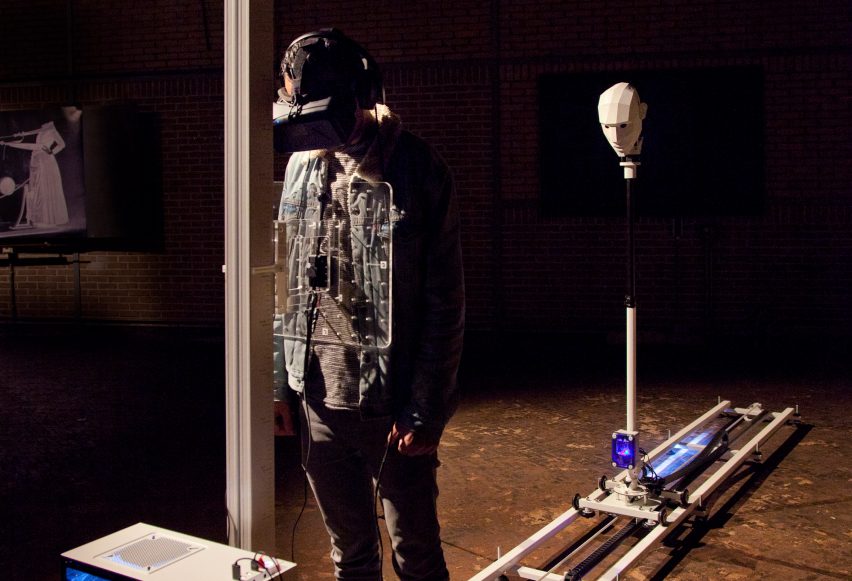
Users stand directly in front of a robotic head, which is fitted with a 3D camera in each eye. The head is mounted on a vertical trolley track, allowing it to move forwards and backwards.
The cameras transmit a live video stream to the user, who watches through a VR headset as the camera glides away from their body.
The robot mimics head movements in real time, allowing the user to look around and observe their environment. It also has "ears" – two microphones positioned at opposite sides of its face that intensify the feeling of displacement.
"Our brains utilise subtle differences in timing and timbre to identify the origin of a detected sound in direction and distance, and where you are in relation to it," Kolkman explains.
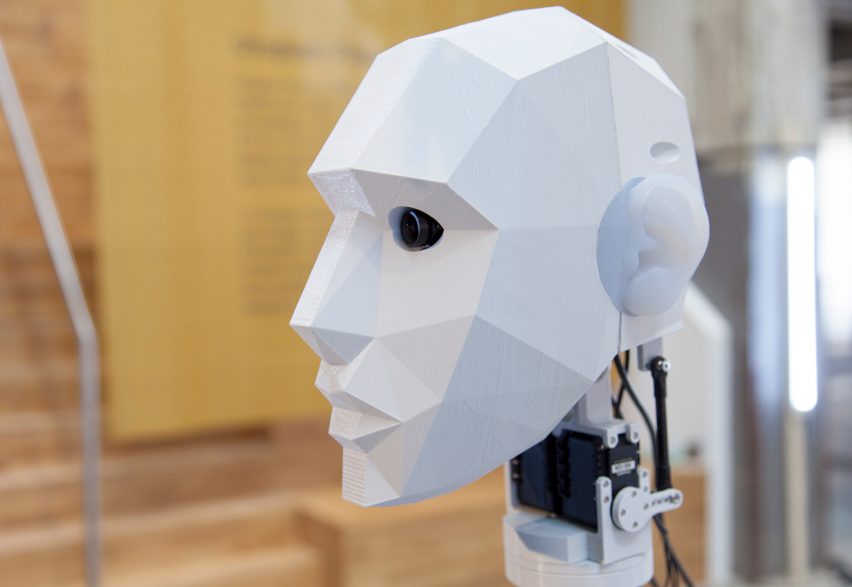
"The same goes for the video feed – by removing the ears from the body and placing them in a different location, your sense of location and presence can be hacked."
The third element is an automatic hammer that taps the chest each second to mimic a heartbeat, which helps to make the experience feel more physical.
Kolkman also added a mirror to the end of the track, so that users are shocked by their "reflection" when the robot peers into it.
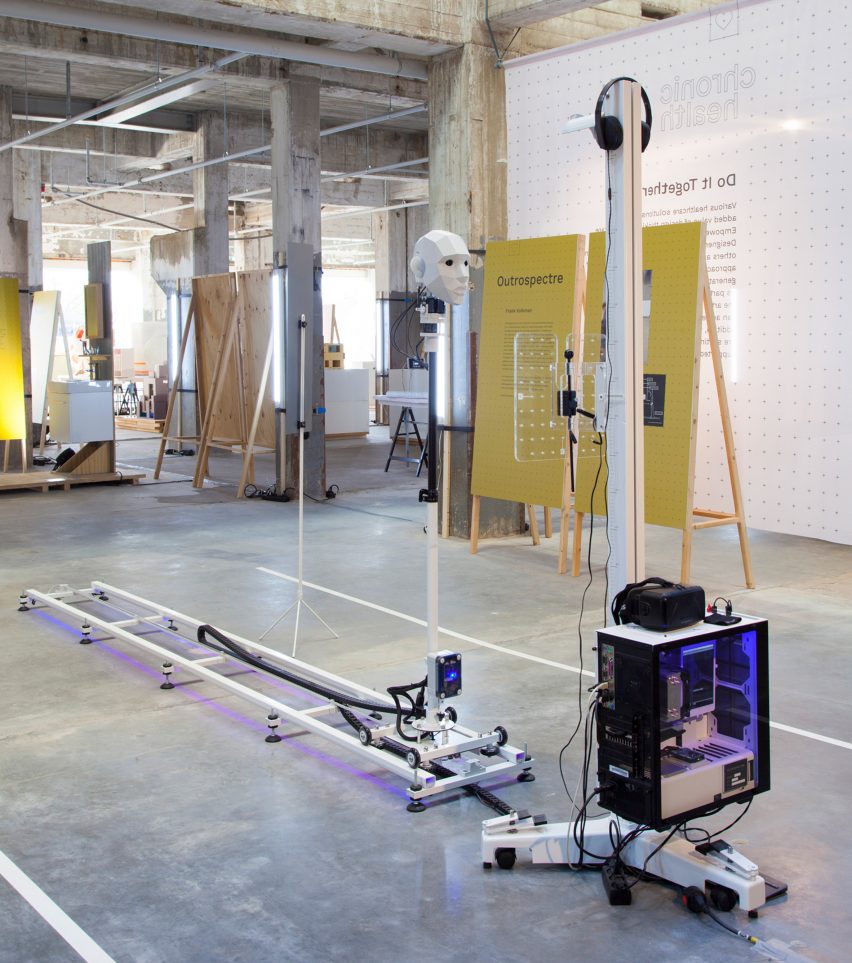
"The experience of being 'present' outside of your body can be so convincingly subtle that we had to break the illusion," Kolkman said.
"We believe the experience is most powerful when you are mentally aware of what is going on, and yet your senses are convincing you otherwise."
Four out of five people currently experience sensations of physically moving or being present in a different location, and a few have recorded being in two places at once.
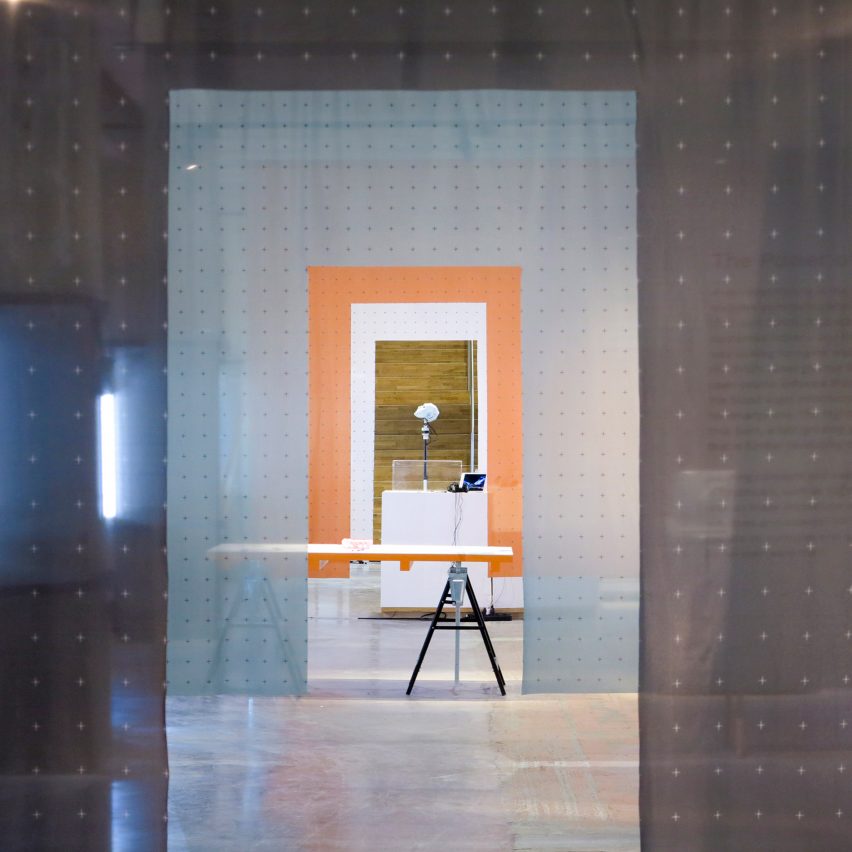
With Outrospectre, Kolkman intends to start a conversation about how designers can introduce a new culture of acceptance and openness about death in hospitals.
He says that there is currently too much focus on keeping ill patients alive, rather than on improving the quality of time they have left.
"The fear and experience of death is a neglected topic," said the designer. "If we began treating our anxieties surrounding death, it might mean the process of dying could become more comfortable."
"In the developed world, the majority of people die in hospital or a care home, turning deaths into medical experiences. But doctors are trained to save and prolong lives, not tend to our demise. They simply lack the tools."
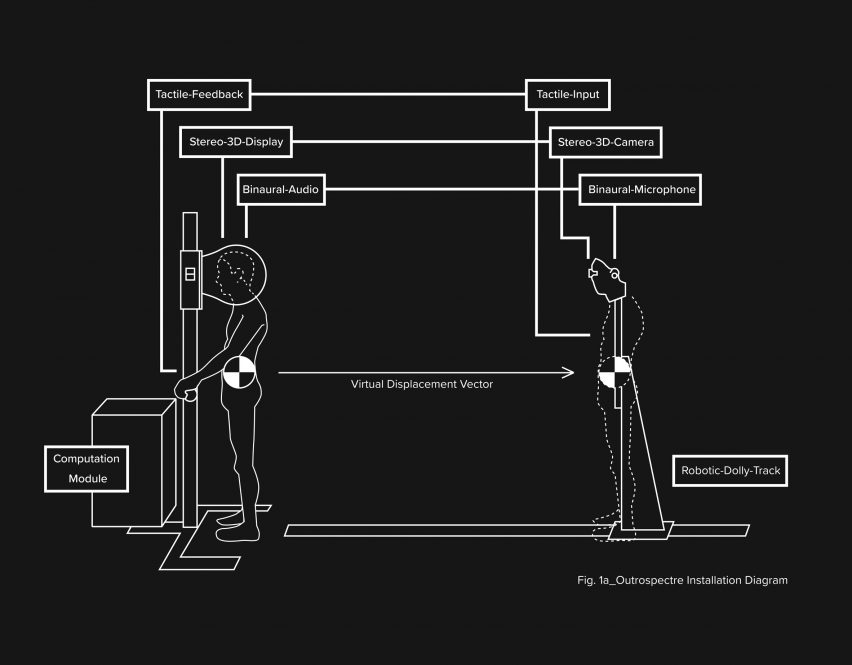
Kolkman, who graduated from the Royal College of Art in 2015, says the next step will be run the project through scientific tests.
He says it is too early to tell how the treatment could be applied, but claims that out-of-body experiences become increasingly powerful on each try.
Outrospectre was part of the Embassy of Health exhibition at Dutch Design Week in Eindhoven last month.
The exhibition also featured Kolkman's OpenSurgery project, an open-source machine that allows people to perform keyhole surgery on themselves using a Playstation controller.
Also during the festival, Dezeen hosted a series of talks discussing how design can solve global issues – these talks are available to watch via our Good Design for a Bad World page.